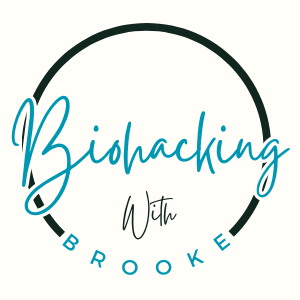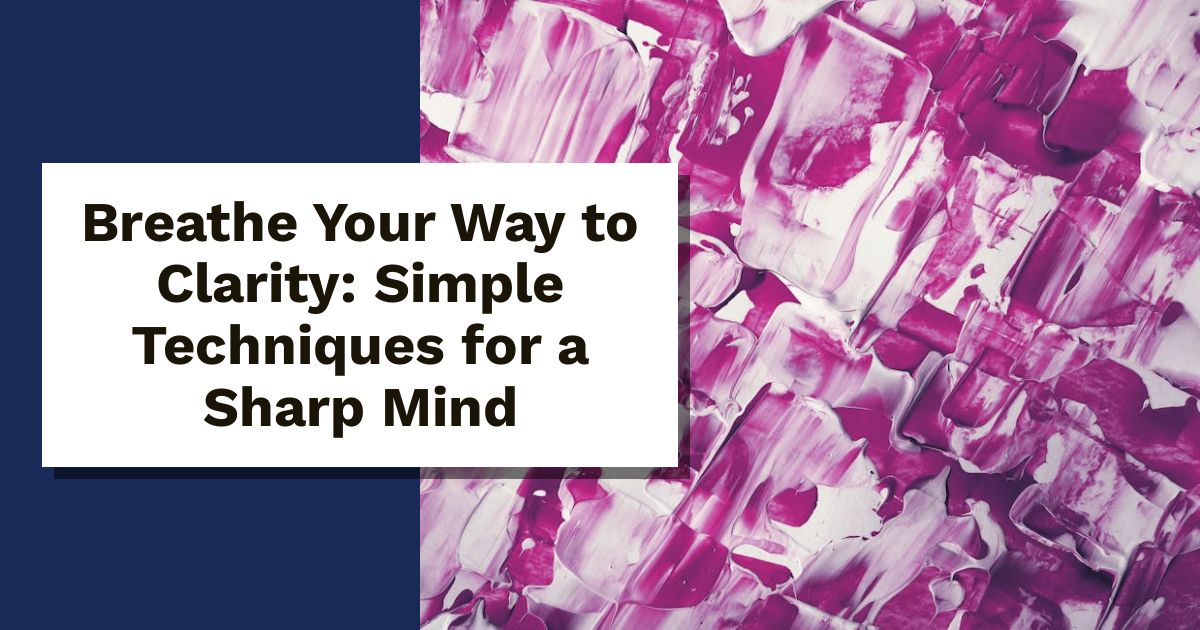Breath is more than just a life-sustaining process; it’s a gateway to mental clarity. Have you ever noticed how a few deep breaths can change your mood in an instant? In a world buzzing with distractions, honing your breath can help you focus and think clearly.
This post uncovers practical breathing techniques that can sharpen your mind. You’ll discover how simple practices can boost your concentration, reduce stress, and enhance your overall well-being. Whether you’re new to breathwork or looking to refine your skills, there’s something here for you.
Join the journey to clarity with these straightforward methods. Your breath is a powerful tool—let’s unlock its potential together!
Understanding Breath and the Mind
To grasp the connection between breath and mental clarity, we must first understand how breathing affects our brain and emotions. Breathing isn’t just a physical act; it’s a powerful tool that influences our mind.
The Science Behind Breathing
Breath plays a crucial role in brain function. Studies show that the way we breathe can enhance or diminish our cognitive abilities. When we inhale deeply, we increase oxygen flow to the brain, activating areas responsible for attention and mood. This means that your breath can sharpen your focus and elevate your spirits.
Research indicates that breathing regularly influences brain networks tied to cognition and emotion. For example, when you practice mindful breathing, you’re not just calming your body; you’re also tuning your brain for better performance. To learn more about how breathing shapes these brain functions, check out How Does Breathing Affect Your Brain? and What Focusing on the Breath Does to Your Brain.
Link Between Anxiety and Breath
Breath patterns are directly linked to mental health, especially anxiety. Often, when we’re anxious, our breathing becomes rapid and shallow, creating a feedback loop that heightens feelings of nervousness. This connection indicates that adjusting our breathing can have a profound effect on our emotional state.
By focusing on slower, deeper breaths, we can break the cycle of anxiety. Techniques such as diaphragm breathing activate the parasympathetic nervous system, which helps calm anxiety. For further insights on this topic, check out Is the Way You Breathe Making You Anxious? and Connection Between Breath and Anxiety.
Understanding the science behind how breathing affects our minds equips you with the knowledge needed to harness this power for mental clarity and emotional balance.
Breathing Techniques for Clarity
Harnessing your breath isn’t just about survival; it’s about thriving mentally and emotionally. Different breathing techniques can help you clear your mind, boost focus, and enhance overall well-being. Here are some practices to explore:
Deep Breathing Exercises
Deep breathing is simple but effective. Follow these steps for proper technique:
- Find a Quiet Space: Sit or lie down comfortably.
- Inhale Deeply: Breathe in slowly through your nose, allowing your abdomen to expand.
- Hold Your Breath: Pause for a moment.
- Exhale Slowly: Release your breath through your mouth or nose.
Benefits of deep breathing include reduced stress, better concentration, and improved relaxation. Incorporate this practice daily to notice a difference. For more details, visit The Benefits of Deep Breathing.
Box Breathing Method
Box breathing, also known as square breathing, is like a mental reset button. It involves four actions:
- Inhale: Through your nose for a count of four.
- Hold: Your breath for four seconds.
- Exhale: Slowly through your mouth for four seconds.
- Hold: Again for four seconds before the next inhale.
This technique calms the nervous system and sharpens your focus, making it perfect for stress management. Curious about how to get started? Learn more at Getting Started With Box Breathing.
4-7-8 Breathing Technique
The 4-7-8 technique, rooted in yoga, is a relaxation powerhouse. Here’s how to do it:
- Inhale: Through your nose for four seconds.
- Hold: Your breath for seven seconds.
- Exhale: Through your mouth for eight seconds.
This pattern not only promotes relaxation but also helps manage anxiety and improves sleep quality. Check out the full breakdown at 4-7-8 Breathing: How It Works.
Alternate Nostril Breathing
This yogic practice strikes balance in your body and mind. To try it:
- Cover One Nostril: With your thumb and inhale through the other.
- Switch: Close that nostril with your ring finger, lift your thumb, and exhale through the other nostril.
- Repeat: Alternate for several cycles.
Benefits include enhanced focus, reduced anxiety, and a sense of calm. For insights on how this technique works, see What to Know About Alternate-Nostril Breathing.
Mindful Breathing Practices
Mindful breathing is all about being present. Here’s how to incorporate it into your daily routine:
- Set Reminders: Use your phone or sticky notes as prompts to pause and breathe.
- Focus on Your Breath: Pay attention to the sensation of air entering and leaving your body.
- Limit Distractions: Create a peaceful environment when practicing.
Practicing mindful breathing can anchor you to the present, helping to reduce stress and improve mental clarity. For tips on integration, visit Mindful Breathing | Practice – Greater Good in Action.
These breathing techniques are not just exercises; they’re tools for gaining clarity and control in your life. Try them out and unlock the full potential of your breath!
The Benefits of Breathwork
Breathwork is more than just inhaling and exhaling. It’s a practice that opens the door to enhanced focus, reduced stress, and overall well-being. By understanding and practicing breath techniques, you can unlock your mind’s potential. Here’s how breathwork can make a difference in your daily life.
Enhancing Focus and Concentration
Breathwork can sharpen your focus like a laser. Concentration is often hindered by distractions and mental clutter. By employing breath techniques, you create a calm environment for your mind.
Deep breathing exercises, such as those outlined in Simple Breathing Exercises to Improve Concentration, help increase oxygen flow to the brain. This process lights up areas responsible for attention and cognition, allowing you to work efficiently. A focused breath practice can transform chaotic thoughts into a clear mindset. Have you tried the Box Breathing technique? It’s simple and proven to improve concentration.
Reducing Stress and Anxiety
Breathwork has tremendous power over stress and anxiety levels. When life gets overwhelming, quickening your breath often follows. This reaction triggers the body’s fight-or-flight response, increasing stress. Instead, practicing slow, deep breaths can create an immediate sense of calm.
Techniques like diaphragmatic breathing activate your relaxation response, soothing the nervous system. Useful resources like Breathing to Reduce Stress explain various methods to incorporate this into your routine. Just imagine releasing tension with each breath out, clearing your mind and body of burden.
Improving Overall Well-Being
Incorporating breathwork into your lifestyle can yield holistic benefits. Think of breath practices as a form of self-care that nourishes both body and mind. Many people report increased energy and improved mood when engaging in regular breath exercises.
Breathwork can also have a positive impact on sleep quality and emotional balance. Engaging in consistent practice allows your mind to reset, reducing feelings of frustration or overwhelm. For further exploration of the physical and emotional benefits, check out 15 Breathwork Benefits: The Science Behind Breathing.
Using breath to enhance well-being is accessible and transformative. With a few moments dedicated to breathing, you can foster an environment for clarity and health in your life.
Creating a Breathwork Routine
Establishing a breathwork routine can significantly enhance your mental clarity and overall well-being. It’s not just about the techniques; it’s about creating a consistent practice that fits into your life. Here’s how to get started.
Setting Time for Breathwork
Finding the right time to practice breathwork is key to forming a lasting habit. Consider these ideal moments:
- Morning Boost: Start your day with fresh energy. A few minutes of deep breathing can awaken your mind and body.
- Midday Reset: Take a break during your lunch hour. This can refresh your focus and prepare you for the afternoon tasks.
- Evening Wind Down: Use breathwork to calm your mind before bed. This practice can improve your sleep quality.
Experiment with these times and see what works best for you. For more insights on scheduling breathwork, check out How to Start—and Stick to—a Breathwork Practice.
Finding Your Perfect Space
Your environment plays a vital role in your breathwork practice. Choose a calming space that promotes relaxation. Here are some tips for creating your ideal breathing spot:
- Quiet Area: Find a space where you can minimize distractions. It could be a cozy corner in your home or a peaceful outdoor setting.
- Comfortable Setup: Make sure you have a comfortable seat or mat. Being relaxed physically enhances your ability to focus on your breath.
- Add Ambiance: Consider lighting a candle or using calming essential oils. These can help set the mood and create a soothing atmosphere.
By crafting your space thoughtfully, you’ll encourage a deeper connection to your breath. For more tips on creating breathing space, see How to Create Some Breathing Space.
Tracking Your Progress
Monitoring your breathwork journey can boost motivation and provide insights into its benefits. Consider these methods for tracking your progress:
- Journaling: Keep a dedicated journal to note your experiences, feelings, and any changes you observe over time.
- Breathwork Apps: Utilize apps designed for breathwork. Tools like Breathwrk can help you log your practice and track improvements.
- Regular Check-ins: Set intervals to review your progress. Reflect on how your mental clarity and overall well-being have evolved.
By staying engaged with your practice, you cultivate a stronger habit and see tangible benefits. Explore more about tracking breathwork at 12 Best Breathwork Apps for 2024.
These steps can guide you in creating a personalized breathwork routine that nurtures your path to mental clarity.
Conclusion
Breath is not just a simple act; it’s a powerful asset for mental clarity. By incorporating techniques like deep breathing, box breathing, and mindful practices into your daily routine, you can sharpen your focus and reduce stress.
Start small and make breathwork a habit.
Your journey toward mental clarity begins with just a few intentional breaths. What techniques will you try first? Your breath could be the key to a sharper mind and a calmer life.
Brooke is a rock-climbing 🧗♀️, tennis-playing 🎾, biohacking 🧬 bookworm 📚 on a mission to unlock the secrets of health, longevity, and living life to the fullest 🌟. When she’s not scaling cliffs, hitting the courts, or testing out the latest hacks, you’ll find her nose in a book or adventuring with her four-legged best friend 🐕 by her side. With a knack for turning science into simple, actionable tips, Brooke’s writing is your guide to hacking your biology and living your best, most vibrant life!


